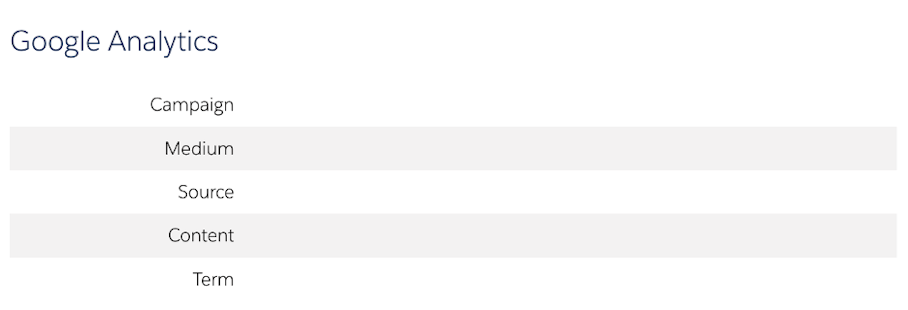UTM parameters are additional pieces of information, also known as ‘query strings’, included in a page URL. They enable marketers to track where the visitors to a URL came from. The standard UTM parameters are:
utm_source=
utm_medium=
utm_campaign=
utm_content=
utm_term=
Each of the above relays important information to marketers about their campaigns, including:
the source of the referral i.e. google, social media, email.
the marketing medium i.e. cpc, instagram, linkedin banner, etc.
which marketing campaign the URL is associated with.
the specific ad or post content containing the link.
which paid keyword generated the click.
You don’t have to use every single one of these parameters in your URL, they’re optional. For example, if MarCloud wanted to track clicks to our free Pardot audit service from this blog post, we could use the following UTM parameters:
https://marcloudconsulting.com/free-audits/?utm_source=website&utm_medium=blog&utm_campaign=free-pardot-audit&utm_content=importance-pardot-utm-parameters
But for a Google Ads campaign, we’d go with:
https://marcloudconsulting.com/free-audits/?utm_source=google&utm_medium=cpc&utm_campaign=free-pardot-audit&utm_term=pardot-audit
This information helps analytics platforms like GA4 properly categorise website traffic into the correct sources and mediums and ensures marketers have access to campaign data for analytics and reporting. Google has a handy Campaign URL Builder for creating tracking URLs quickly.
However, Pardot also relies on UTMs for tracking prospects. Ensuring these are captured correctly requires some checks and configuration on your side.






